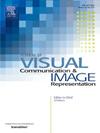Seg-Cam: Enhancing interpretability analysis in segmentation networks
IF 2.6
4区 计算机科学
Q2 COMPUTER SCIENCE, INFORMATION SYSTEMS
Journal of Visual Communication and Image Representation
Pub Date : 2025-04-21
DOI:10.1016/j.jvcir.2025.104467
引用次数: 0
Abstract
Existing interpretability analysis methods face significant limitations when applied to segmentation networks, such as limited applicability and unclear visualization of weight distribution. To address these issues, a novel approach for calculating network layer weights was established for segmentation networks, such as encoder-decoder networks. Rather than processing individual parameters, this method computes gradients based on pixel-level information. It improves the weight calculation model in the Grad-Cam method by removing the constraint that the model’s output layer must be a one-dimensional vector. This modification extends its applicability beyond traditional CNN classification models to include those that generate feature maps as output, such as segmentation models. It also improves the visualization process by calculating the distribution of feature map weights for the specified layer without changing the model architecture or retraining. Utilizing the image segmentation task as the project context, the seg-cam visualization scheme is incorporated into the initial model. This scheme enables the visualization of parameter weights for each network layer, facilitating post-training analysis and model calibration. This approach enhances the interpretability of segmentation networks, particularly in cases where the head layer contains many parameters, making interpretation challenging.

Seg-Cam:增强分割网络的可解释性分析
现有的可解释性分析方法在应用于分割网络时存在明显的局限性,如适用性有限、权重分布可视化不清晰等。为了解决这些问题,建立了一种新的方法来计算网络层权重的分割网络,如编码器-解码器网络。这种方法不是处理单个参数,而是基于像素级信息计算梯度。通过消除模型输出层必须为一维向量的约束,改进了Grad-Cam方法中的权值计算模型。这种修改将其适用性扩展到传统CNN分类模型之外,包括那些生成特征映射作为输出的分类模型,例如分割模型。它还通过计算指定层的特征映射权重分布来改进可视化过程,而无需改变模型结构或重新训练。利用图像分割任务作为项目背景,将分割凸轮可视化方案纳入初始模型。该方案实现了各网络层参数权值的可视化,便于训练后分析和模型校准。这种方法增强了分割网络的可解释性,特别是在头层包含许多参数的情况下,使得解释具有挑战性。
本文章由计算机程序翻译,如有差异,请以英文原文为准。
求助全文
约1分钟内获得全文
求助全文
来源期刊

Journal of Visual Communication and Image Representation
工程技术-计算机:软件工程
CiteScore
5.40
自引率
11.50%
发文量
188
审稿时长
9.9 months
期刊介绍:
The Journal of Visual Communication and Image Representation publishes papers on state-of-the-art visual communication and image representation, with emphasis on novel technologies and theoretical work in this multidisciplinary area of pure and applied research. The field of visual communication and image representation is considered in its broadest sense and covers both digital and analog aspects as well as processing and communication in biological visual systems.
 求助内容:
求助内容: 应助结果提醒方式:
应助结果提醒方式:


